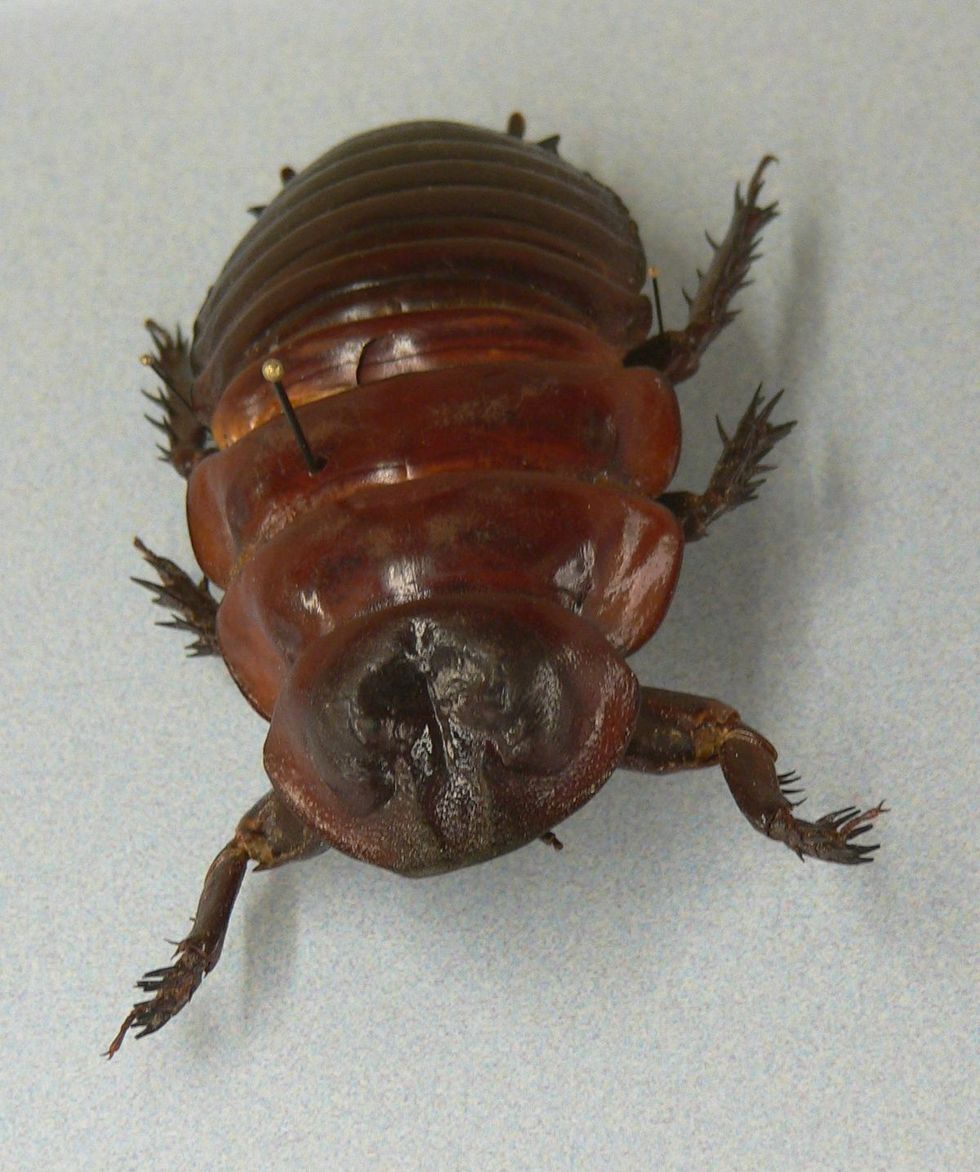What are some general biological features insects typically hold? Segmented bodies, antennae, lay eggs, low parental investment all distinguish insects from the rest of the organism in the animal kingdom. Personally, I think the charm in animal biology is finding exceptions to the rule, which is why you should learn about the giant burrowing cockroach, or as it is more commonly known as, the rhinoceros cockroach.
I’ve learned enough about insects to know that they, typically, lay their eggs. What usually happens is a female mates, perhaps multiple times, and chooses either a spot or organism to lay her eggs on and/or in. Unlike viviparous organisms- organisms that give live birth- these organisms are oviparous; meaning they lay eggs that need time to develop. The (female) rhinoceros cockroach, on the other hand, retains its eggs and incubates them within herself for a few months before giving birth to several nymphs. This makes the rhinoceros cockroach oviparous, rather than viviparous. The difference between the two being that viviparous organisms do not use an egg yolk to nourish their young, instead using a placental connection between the mother and offspring. This of course doesn’t mean that the rhinoceros cockroach isn’t giving “real” birth, but that the cockroach doesn’t use a placenta to nourish its young like most viviparous organisms do.
Besides the mechanism of producing organisms, parental investment is another distinguishing characteristic. Parental investment just refers to how much parenting an organism is willing to do. The extent to which organisms will raise their young varies, from several years, to leaving the eggs for good. Most insects fall into the latter category, where their duties as a parent end when they lay their clutch. The rhinoceros cockroach on the other hand has a much higher parental investment, raising their offspring for several months before they leave the nest. During this time the mother feeds her offspring food that she has collected throughout the dry season, as well as keeps them warm under her shell. After the child rearing period, the nymphs leave with a better head start than most insect offspring are granted.
To put it informally, you don’t find mothers in the insect world; most don’t give birth, let alone raise their offspring. It’s interesting to find exceptions to the rules when looking at animals, plants, and other types of organisms. The fact that nothing is put into the clean-cut spaces that we have defined makes the world more adventurous. There is so much to discover and so little we truly understand. It’s humbling, and is a constant reminder that we are still human. However, the rhinoceros cockroach is more than just an interesting exception, but a heartwarming one. Throughout all the insect world, mothers are scarce. The world is a cold, harsh place where many little offspring die before reaching adulthood, leaving only a small, fortunate group of little ones that were able to survive the dangerous world on their own. However, in a little burrow just one meter in depth, lives a mother and her little ones. She feeds her children and shields them from the cold under her shell. They live in their peaceful hole as a family until the children are old enough, and capable enough to start their own lives and- perhaps- families.
All information specific to the rhinoceros cockroach can be found here


















